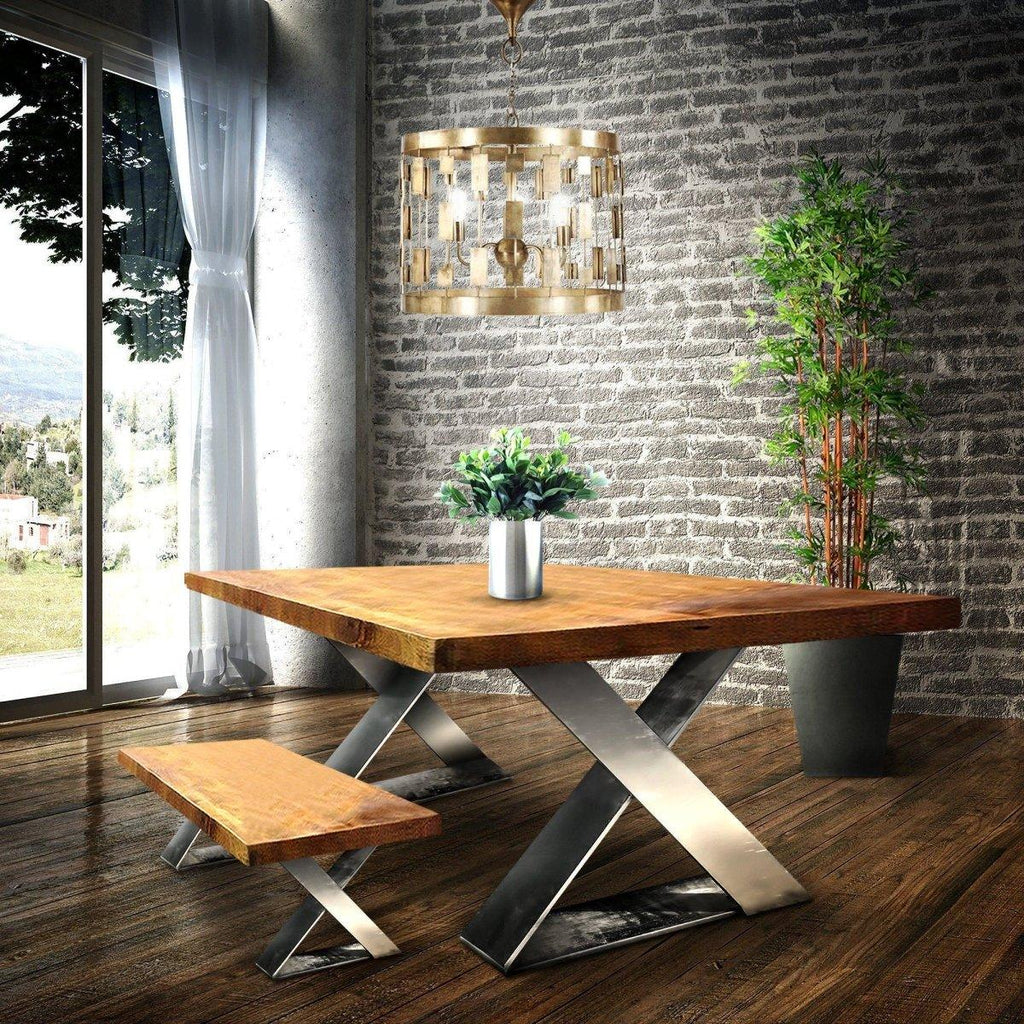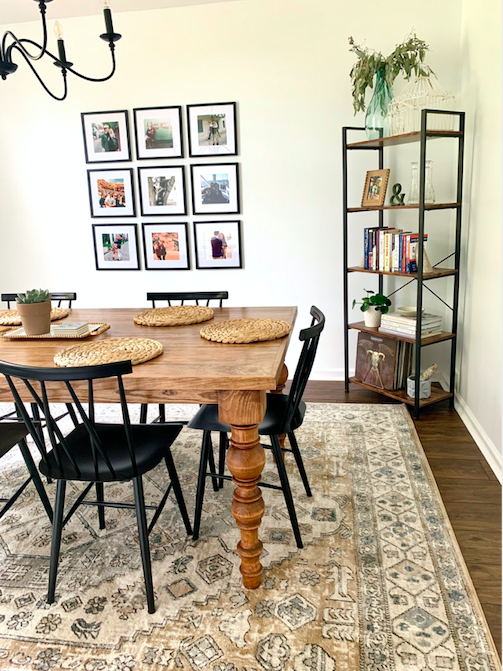From Conventional to Modern: Find the Perfect Dining-room Table Legs for Your Style
The choice of eating area table legs plays a pivotal duty in defining the total personality of your space, linking the gap in between traditional craftsmanship and contemporary aesthetic appeals. While classic styles such as cabriole and turned legs evoke a feeling of timeless class, contemporary designs like barrette and geometric choices present a possibility for striking aesthetic rate of interest. Reviewing the ideal equilibrium between these designs requires a nuanced understanding of your existing design and individual preference. As you think about these aspects, the inquiry continues to be: exactly how can you flawlessly integrate these diverse leg designs to create a harmonious eating experience?
Recognizing Table Leg Styles
The variety of eating room table leg styles can considerably affect both the aesthetics and performance of the room. Each leg design adds distinct sensible features and aesthetic components, satisfying diverse layout preferences and usage demands. Understanding these styles is vital for picking the best eating table that lines up with your total interior decoration vision.
For example, conical legs use a tidy, classic appearance that can enhance an area's sophistication, while pedestal bases offer stability and optimize legroom, making them suitable for smaller sized rooms. Barrette legs, a hallmark of mid-century modern style, present a commercial panache, enabling a ventilated, open feel. Likewise, trestle legs evoke rustic appeal, supplying robust assistance and a feeling of eternity.
Wood legs can bring heat and structure, whereas metal choices commonly convey a streamlined, modern ambiance. Eventually, recognizing table leg designs is crucial for developing a cohesive dining location that mirrors personal style while guaranteeing practicality and convenience.
Typical Table Leg Options
When choosing eating room table legs, standard alternatives usually embody timeless sophistication and workmanship. These layouts reflect an abundant heritage and a dedication to quality, making them optimal for those that appreciate classic aesthetic appeals.
Among the most iconic standard leg designs is the cabriole leg, characterized by its graceful curved form. This layout typically features attractive makings and is most commonly discovered in Queen Anne and Chippendale furniture. One more preferred option is the turned leg, which boasts a collection of smooth, rounded forms that provide a traditional look while maintaining stability.
Moreover, the straight leg, while simple, provides a unadorned and sturdy framework that can mix seamlessly with a range of tabletop styles. For those attracted to ornate outlining, claw-and-ball feet legs evoke a sense of grandeur and can offer as a sensational focal point in any eating space.
Last but not least, pedestal bases, although not purely legs, give an alternative traditional choice that enables enough legroom and can be beautifully sculpted. Each of these typical leg styles adds to the overall atmosphere of a dining room, marrying function with aesthetic charm.

Modern Table Leg Styles
Modern table leg styles provide a diverse array of designs that stress clean lines and innovative materials. These styles usually focus on performance while acting as striking prime focus within a dining area. Minimalist aesthetics are common, with legs crafted from products such as steel, glass, and crafted timber, which contribute to a airy and contemporary feel.
One prominent style is the barrette leg, identified by its slim, conical framework that offers stability without overwhelming the tabletop (dining room table legs). This style is commonly found in mid-century modern-day furnishings and can easily enhance different eating table a fantastic read forms. Another trend is using geometric forms, where legs may handle unbalanced or angular forms, adding aesthetic passion and a touch of virtuosity

Mixing Designs for Unique Spaces
Commonly, homeowners look for to produce one-of-a-kind eating areas that show their personal design by mixing various layout elements. This approach permits the incorporation of diverse aesthetic appeals, leading to a harmonious yet distinct setting. As an example, coupling a rustic wood table with smooth, modern metal legs can develop an eye-catching comparison that raises the area's general appeal.
Additionally, integrating vintage table legs with modern table tops can stimulate a sense of history while preserving a contemporary sensibility. Such combinations not just display private taste however likewise urge imagination, enabling home owners to curate a space that really feels both individual and inviting.
Color plays a crucial role in this blending process; choosing table legs that match or contrast with the existing color design can improve visual passion. Whitewashed legs can soften the boldness of a dark table surface, producing a well balanced visual.
Tips for Picking the Right Legs
Picking the right table legs is necessary for attaining both capability and aesthetic appeal in your eating room. Begin by taking into consideration the overall design of your space. Typical settings benefit from legs that include detailed makings or transformed styles, while modern rooms might call for sleek, minimal styles.
Following, assess the height and security of the legs. dining room table legs. Common dining tables vary between 28 to 30 inches in height, so guarantee the legs match this measurement for comfort. Furthermore, durable products, such as wood or steel, can Learn More boost security and durability
Examine the leg form too-- alternatives consist of directly, tapered, or stand designs. Straight legs provide a timeless appearance, while tapered legs review can include a touch of style. Pedestal bases provide sufficient legroom and are excellent for smaller sized spaces.
Conclusion
In recap, choosing the excellent dining-room table legs needs cautious consideration of both traditional and modern designs. Standard choices such as cabriole and transformed legs offer classic beauty, while contemporary layouts like hairpin and geometric forms give a modern touch. By integrating leg style, height, and product with the total decoration, a natural and inviting ambience can be achieved. Eventually, the selected table legs ought to show the desired aesthetic, improving the dining experience within the space.
The range of eating room table leg styles can considerably influence both the looks and functionality of the room. Ultimately, understanding table leg styles is important for producing a cohesive dining location that shows personal design while making sure practicality and comfort.One of the most famous standard leg designs is the cabriole leg, defined by its elegant rounded form. Straight legs provide a classic look, while conical legs can add a touch of beauty.In recap, choosing the optimal dining area table legs needs cautious factor to consider of both contemporary and standard styles.